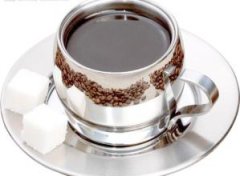A brief introduction to the History and Culture of the Origin and Development of Fine Coffee beans in Chimeier Manor with a long aftertaste

Another special feature is that the variety of coffee planted by Kimmel cannot even be counted with one hand: Typica, Arusha, BlueMountain, MundoNovo, Catimor, Caturra. Or even more-in fact, just as they don't put eggs in the same basket, most farmers actually grow different varieties to avoid the risk that a particular variety will fail to grow or produce less than expected.
The round beans of this Chimeier Manor will taste a little spicy, with sweet and refreshing notes of nuts and sugar cane, creamy and smooth, the round beans taste more solid and the overall performance is balanced and smooth. Rich flavor, pleasant aroma, no herbal flavor or soil flavor, its texture is as strong and mellow as a Van Gogh painting.
Whether it is used to mix Italian products or general comprehensive coffee, it can make up for the lack of sour coffee, coupled with the scarcity of things, it has been favored by more and more coffee lovers in recent years.
In recent years, Papua New Guinea Coffee began to bring its own unique high-quality washed Arabica beans, on behalf of Oceania to enter the ranks of the world specialtycoffee. The coffee style of Papua New Guinea has the characteristics of full particles, moderate acidity and mellow taste.
Papua New Guinea is an island country in Oceania. In Malay, "Papua" means "curly hair". It is said that in 1545, the explorer Retes arrived on the island and found that most of the people's hair on the island was curly, that is, the island was called "the island of curly hair", so the name was handed down. Papua New Guinea, to the east of Indonesia, has a standard island climate, located between the equator and 10 degrees south latitude, with tropical rain forest volcanic rocks and plateau topography, between 1200 and 2500 meters above sea level, making it a paradise for growing coffee.
The local yield is small, and about 85% of the total coffee is produced by the garden cultivation system of small farmers. Small farmers join local cooperatives and share their processing equipment. Coffee is Pakistan's second largest export of agricultural products, which shows the importance of coffee industry to Pakistan's economy. Because the variety of coffee is different from that of Indonesia, and the altitude is higher than Sumatra, coupled with the use of water washing treatment, the regional taste of PNG coffee is different from Indonesia's muggy and low flavor, but has bright, sweet and sour, flower and fruit aromas, similar to the flavor of South America.
Papua New Guinea has a detached and primitive natural environment and its land is vast and fertile. Its unique volcanic rock soil and abundant rainfall create excellent natural conditions for the growth of coffee. The top coffee beans in Papua New Guinea are as beautiful and precious as the country's national bird of paradise.
Large estates / farms (plantation) usually have their own washing plants, and smaller individual coffee farmers are more likely to control the quality and flavor of their output. Located in the Wiki Valley of the western plateau of Papua New Guinea near the kimel Valley, Chimere Manor, like many large farms / estates, has its own washing plant, but it is in fact an estate owned by many independent small coffee farmers of the surrounding Opais people and, in a sense, a private cooperative. Due to the excellent growth conditions and the stable quality control process of the treatment plant, the coffee produced has an active sense of brightness and retains a considerable degree of flavor uniqueness of Papua New Guinea coffee.
Important Notice :
前街咖啡 FrontStreet Coffee has moved to new addredd:
FrontStreet Coffee Address: 315,Donghua East Road,GuangZhou
Tel:020 38364473
- Prev

A brief introduction to the description of the flavor, taste and aroma characteristics of boutique coffee beans in Kimmel Manor.
The round beans of this Chimeier Manor will taste a little spicy, with sweet and refreshing notes of nuts and sugar cane, creamy and smooth, the round beans taste more solid and the overall performance is balanced and smooth. Rich flavor, pleasant aroma, no herbal flavor or soil flavor, its texture is as strong and mellow as a Van Gogh painting. Whether it is used to mix Italian items
- Next

A brief introduction to the Market Price of Fine Coffee Bean varieties in soft and full-bodied Coffee Manor
Large estates / farms (plantation) usually have their own washing plants, and smaller individual coffee farmers are more likely to control the quality and flavor of their output. Located in the Vicki Valley of western Papua New Guinea near the kimel Valley, Chimere Manor, like many large farms / estates, has its own washing treatment plant, but in fact it is made up of the surrounding Opais people.
Related
- Does Rose Summer choose Blue, Green or Red? Detailed explanation of Rose Summer Coffee plots and Classification in Panamanian Jade Manor
- What is the difference between the origin, producing area, processing plant, cooperative and manor of coffee beans?
- How fine does the espresso powder fit? how to grind the espresso?
- Sca coffee roasting degree color card coffee roasting degree 8 roasting color values what do you mean?
- The practice of lattes: how to make lattes at home
- Introduction to Indonesian Fine Coffee beans-- Java Coffee producing area of Indonesian Arabica Coffee
- How much will the flavor of light and medium roasted rose summer be expressed? What baking level is rose summer suitable for?
- Introduction to the characteristics of washing, sun-drying or wet-planing coffee commonly used in Mantenin, Indonesia
- Price characteristics of Arabica Coffee Bean Starbucks introduction to Manning Coffee Bean Taste producing area Variety Manor
- What is the authentic Yega flavor? What are the flavor characteristics of the really excellent Yejasuffi coffee beans?

